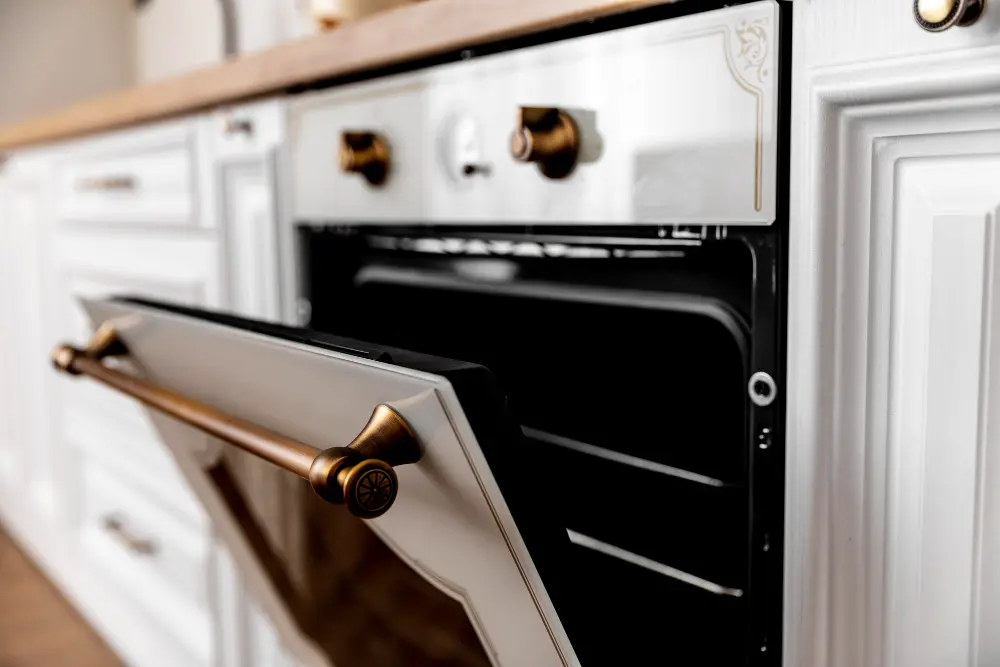If you’ve ever looked at your oven’s control panel and seen that mysterious “Self-Clean” button, you may have wondered: Does it actually work? Is it safe? Should I even use it?
The self-cleaning feature can be a powerful tool—but it’s not without risks. Used improperly or too often, it can cause damage, odors, and even safety hazards.
Let’s explore what self-clean mode actually does, when it makes sense to use it, and what alternatives you might want to consider instead.
What Self-Clean Mode Really Does (and How Hot It Gets)
Self-clean mode works by turning your oven into an extremely high-heat incinerator. It heats up to 800–1,000°F (426–537°C)—hot enough to burn food residue and grease into ash.
- The cycle typically lasts 2–6 hours
- You’ll hear the door lock automatically—it won’t open until the oven cools
- Once finished, all that’s left is a layer of white-gray ash you can wipe away
While effective at removing baked-on messes, that extreme heat comes with consequences.
Risks: Fire Hazards, Smoke, Blown Fuses, and Enamel Damage
That extreme temperature can trigger several issues, especially if you haven’t prepped your oven properly—or if your appliance is aging.
Potential risks include:
- Smoke and fumes: Leftover grease or food burns off and releases smoke or odors (especially if you have a dirty oven to start)
- Fire hazards: Grease buildup can ignite
- Blown fuses or tripped breakers: High power draw stresses older electrical systems
- Enamel cracking or discoloration: Frequent use may weaken or damage the oven lining over time
- Malfunctioning door locks: If the lock fails, the oven may remain sealed or unusable
Tip: Keep pets and sensitive individuals (like those with asthma) out of the kitchen during the cycle.
When to Use It—And How to Prep Safely
Self-clean mode is best used once or twice a year, or only when you’ve got serious buildup that manual scrubbing can’t tackle.
To prep safely:
- Remove all racks (they can warp or discolor)
- Wipe out large food particles or grease splatters beforehand
- Ventilate the kitchen by opening a window or turning on a fan
- Never use commercial oven cleaners before or during a self-clean cycle—residue may become toxic under extreme heat
- Don’t leave the house while it’s running
Best Alternatives to Deep-Clean Without Heat Cycles
If the risks of self-clean mode feel like too much, you can still deep clean your oven safely and effectively with natural methods:
Baking soda paste method:
- Mix ½ cup baking soda with a few tablespoons of water to form a spreadable paste
- Coat interior surfaces and let sit overnight
- Wipe clean and follow with vinegar spray to remove residue
Vinegar steam:
- Fill an oven-safe dish with 1 cup vinegar + 1 cup water
- Heat at 250°F for 30 minutes to loosen grime
- Wipe down after it cools
These gentler options take a little more elbow grease but eliminate the risks associated with high-heat cleaning.
How Often Should You Deep Clean Your Oven?
- Light-use households: Every 4–6 months
- Regular bakers or roasters: Every 2–3 months
- After major spills or smoking events: ASAP to prevent baked-on messes
Quick monthly wipe-downs can help extend the time between full cleans and reduce the need for self-clean mode.
Wrap-Up
Self-clean mode can be useful—but it’s not without danger. With proper prep and caution, it’s a helpful tool. But for safer, more frequent cleanings, natural alternatives offer peace of mind and less wear on your oven.



